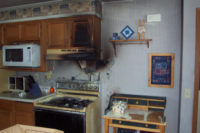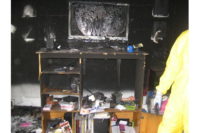Ask Annissa: What’s the Best Way to Handle Excessive Clutter on a Pack Out? (With Video)


We are on a fire job and it’s pretty basic items - nothing crazy. However, they have a lot of stuff in their home and it is pretty unorganized. Our pack out crew is feeling kind of overwhelmed with this one. My question: When you walk into a home that was more than likely a disorganized mess even before the fire happened, where do you start?
It really doesn't matter whether the house is clean and sparsely furnished or if a stage four hoarder lives there - the way you handle each job is basically the same.
You should handle it one room at a time and one box at a time.
This is sometimes easier said than done. Even after almost 15 years of doing this, I still walk into some jobs and feel a bit overwhelmed with the magnitude of its entirety, especially when you have an extremely cluttered home you are dealing with.
The key is to always remember to not look at the entire house all at once. Instead, chunk it down by dealing with one room at a time and keep your systems in place. This will keep you and your team from feeling overwhelmed and will help the work flow.
Here are the steps that we take to handle every job, no matter how big or small, and it helps keep everyone on track:
After all paperwork is signed, rooms are marked and photos are taken, the first thing you want to do on every job is pull soft items. This will likely remove a huge chunk of the clutter from cupboards, bedrooms and floor areas.
Then go through each room and remove obvious garbage from garbage cans and floors. Be sure that you have a disposal authorization release form signed before disposing of anything.
Now that you have some open space in each room, you can get a better grip on exactly what you have to deal with. This will give you and your team some immediate results and put the job in perspective as you have likely just removed a big chunk of the clutter.
Next, handle any specialty items that will require you to call in a specialty subcontractor or transport the items for repairs.
And finally, send your log destroyed team into the source room to log and dispose of all destroyed items in the room, then have them handle logging and disposing of destroyed in the kitchen. These are two rooms that will likely have the majority of items that are destroyed in the home.
These four steps can be accomplished in short order and will give you a feeling of control over the situation quickly.
You and your team are now ready to start processing the job room-by-room.
These same steps apply when you are dealing with a clean in-place that does not require a pack out. I explain the process more in this video:
When teaching a class, I always stress how important it is that you put a system like this in place when dealing with any job, but especially on the jobs that can overwhelm your team. Remember if you or your team is overwhelmed, just think of how the homeowner may be feeling. If they see the professional restoration company that they hired getting stressed out, you could be dealing with a freaked out client real quick.
Your client and your team will follow your lead, so be their confident captain and guide them into calm waters.
Looking for a reprint of this article?
From high-res PDFs to custom plaques, order your copy today!









